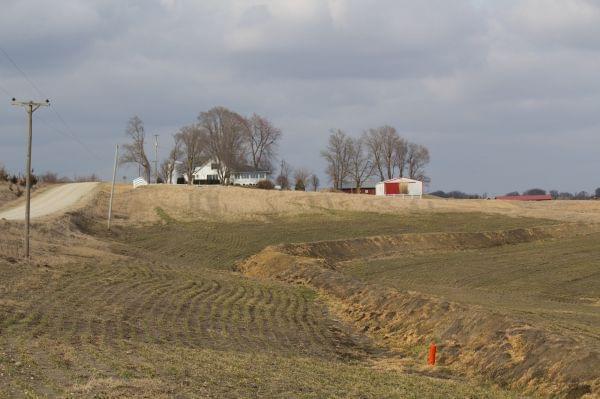Farmers Using More Conservation Techniques Despite Lower Enrollment In Federal Programs

Cover crops emerge early on fields and help keep soil and nutrients in place. Amy Mayer/Harvest Public Media file photo
The U.S. Department of Agriculture’s recently released 2017 Census of Agriculture data show the amount of land in the largest federal conservation programs has decreased nationwide and in many Midwest and Plains states. But that doesn’t mean farmers are ignoring soil health, nutrient runoff or erosion problems.
The census asks about federal conservation and wetlands programs, which Michigan State University researcher Adam Reimer said typically refers to land retirements — taking marginal lands out of production in exchange for money. The largest one, the Conservation Reserve Program, doesn’t allow as many acres now as it did before the 2014 farm bill.
“The program actually shrunk in size,” Reimer said. “So (the decrease) reflects a change in congressional priorities more than reflecting any sort of farmer desire to engage in programs.”
Looking deeper into the census, Reimer said, shows farmers are using more cover crops and tilling less, both of which have environmental benefits..
“A lot of farmers have adopted these conservation practices probably outside of programs, reflecting kind of an increased awareness that these are good for production as well as protecting environmental quality off-farm,” Reimer said.

Source: USDA 2017 Census of Agriculture
That’s what 500 conventional farmers in Iowa told researchers from Iowa State University’s Ivy College of Business. Professor Priyanka Jayashankar looked at farmers’ adoption of so-called “internet of things” (IoT) technologies that use big data, such as precision agriculture and GPS field mapping.
“Some of these applications have a direct benefit in terms of sustainable agriculture practices,” Jayashankar said. “So for instance, there are some tools, IoT tools, which enable farmers not to overuse pesticides or fertilizers. And this definitely has an impact on environmental stewardship.”
Jayashankar and her colleagues were particularly interested in how farmers weigh the risk and value of new technologies, especially when it comes to sharing data gathered on their farms with the companies that make the technology. The researchers have also looked at how trust develops between farmers and those companies.
“What we feel could be a potential game-changer going forward would be co-creation,” she said, “because farmers are not just passive recipients of that technology service, but they’re actually generating the data and they’re also making things work on the ground.”
Reimer noted it can take years —even decades — to measure the impacts of farmers’ conservation decisions.
Follow Amy on Twitter: @AgAmyinAmes
Links
- Conservation Benefits From Fruit, Nut Trees Are Tops, But There’s Money In Them, Too
- Conservation Programs In Farm Bill Can Help Farmers Protect Environment, Wallet
- Conservation Officials Want People To Eat Asian Carp
- U of I Geology Graduate Student Confirms Effectiveness of Soil Conservation Practices
